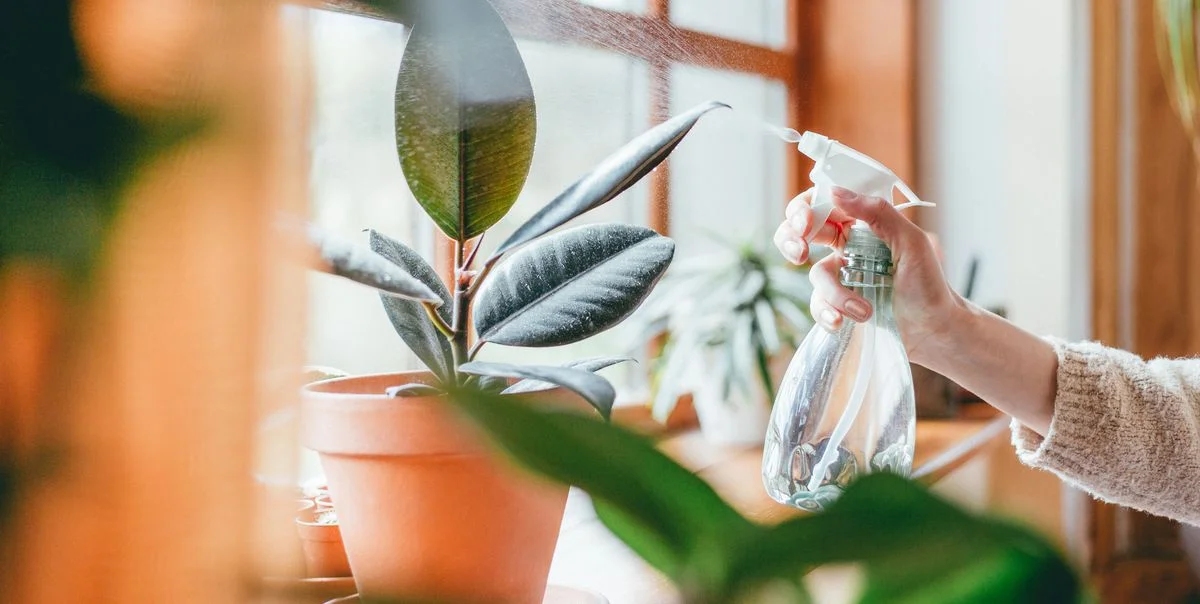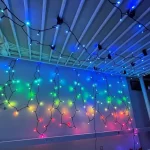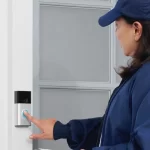In the heart of every home that cherishes greenery, Homebase indoor plants serve as both decor and companions. These leafy friends do more than just beautify; they breathe life into interiors, acting as natural air purifiers and mood enhancers. Embracing the green thumb trend, homeowners are continually on the lookout for indoor plants that not only complement their space but are also low-maintenance and resilient. This comprehensive guide will take you through a curated selection of indoor plants perfect for your homebase, ensuring that each corner of your living space is infused with vitality and serene beauty.
Choosing the Perfect Homebase Indoor Plants
When choosing Homebase indoor plants, assess your space for light, humidity and room to grow. Opt for shade-tolerant plants like pothos or snake plants for darker corners. If you’ve got bright, indirect sunlight, consider a peace lily or rubber plant. Ensure there’s enough space for the plant to grow without crowding the area. For dry environments, succulents and cacti are ideal, while ferns may prefer more humidity. Select a spot away from drafts and fluctuating temperatures to guarantee a stable environment for your plants to thrive. Always match the plant’s needs with the conditions of your home for best results.
Leafy Luxuries: Large Homebase Indoor Plants
| Plant Name | Light Requirements | Watering Schedule | Ideal Location | Care Tips |
|---|---|---|---|---|
| Monstera Deliciosa | Bright, indirect light | Once a week | Living room corner | Dust leaves, support with a moss pole |
| Majesty Palm | Moderate to bright light | Keep soil moist | Beside a sunny window | Avoid overwatering, mist leaves |
| Rubber Plant | Bright, indirect light | Allow top soil to dry | Office or study area | Wipe leaves, prune to shape |
| Fiddle Leaf Fig | Bright, indirect light | When top inch is dry | Open spaces, hallways | Avoid drafts, rotate for even growth |
| Bird of Paradise | Bright light | Once a week | Sunny indoor patio | Provide humidity, keep warm |
| Snake Plant | Low to bright, indirect light | Every 2-3 weeks | Bedroom or bathroom | Very drought-tolerant |
| ZZ Plant | Low to bright, indirect light | Allow soil to dry out | Office or living room | Tolerates neglect |
Compact Companions: Small Indoor Plants for Your Home
When choosing small indoor plants for your home, look for types that can fit easily on shelves or desks without taking up too much space. Succulents and cacti are great choices for areas with lots of light and don’t need much care. For shadier spots, try a spider plant or peace lily. They’ll also help clean the air as they grow. Make sure your pots have good drainage so the roots don’t get too wet. Think about the humidity where you’ll put the plant. Some small plants, like African violets, love moisture. Turn your little green friends every so often so they grow evenly and don’t lean toward the light.
Caring for Your Homebase Indoor Plants
The Essentials of Indoor Plant Care
| Essential Factor | Description | Tips for Success |
|---|---|---|
| Lighting | Proper lighting is vital for photosynthesis | Place plants near a window; rotate for even exposure |
| Watering | Correct watering is key to plant health | Water according to plant needs; avoid overwatering |
| Humidity | Many plants require a certain humidity level | Use a humidifier or mist plants to increase moisture |
| Temperature | Stable temperatures promote plant health | Keep plants away from drafts and sudden temperature changes |
| Soil Quality | Nutrient-rich soil supports growth | Use the right soil mix; repot with fresh soil as needed |
| Fertilization | Plants need food to flourish | Fertilize during growing season; follow product guidelines |
| Pruning | Removes dead parts, promotes new growth | Prune regularly; disinfect tools between uses |
| Pest Control | Keeping pests at bay ensures plant health | Inspect regularly; treat pests early with appropriate methods |
| Repotting | Necessary for continued growth | Repot when rootbound or according to plant species |
| Cleaning | Dust on leaves can block sunlight | Gently wipe leaves with a damp cloth periodically |
Watering Wisdom: Hydration for Homebase Indoor Plants
Overwatering is a common misstep. Your Homebase indoor plants require a balance, with specific varieties like snake plants and cacti preferring a drier soil between drinks, while others, such as peace lilies, need consistently moist soil to prosper.
Feeding Fundamentals: Nutrients for Growth
- Understand Plant Needs: Each Homebase indoor plant has unique nutrient requirements. Research your plant’s specific needs to tailor your feeding strategy effectively.
- Choose Quality Fertilizer: Opt for a reputable brand of fertilizer that matches your plant’s growth stage and type (flowering, foliage, succulent, etc.).
- Follow the N-P-K Ratio: The nitrogen (N), phosphorus (P) and potassium (K) ratio on fertilizers is crucial. For leafy growth, go higher on nitrogen. For blooms, phosphorus is key.
- Dilute Properly: Over-fertilizing can damage your plants. Dilute the fertilizer according to the instructions to avoid nutrient burn.
- Seasonal Feeding: Generally, feed your plants during the growing season (spring and summer) and reduce feeding in the fall and winter months when plant growth naturally slows.
- Liquid vs. Slow-Release: Liquid fertilizers provide quick nutrients, while slow-release granules offer a steady supply over time. Decide based on your plant’s needs and your own schedule.
- Monitor Plant Response: After feeding, watch how your plant responds. Signs of good health include new growth and vibrant leaves. Adjust feeding if you notice signs of distress or poor growth.
- Refresh Soil Annually: Even with regular feeding, the soil can become depleted. Replace or refresh the top layer of soil annually to ensure a continued supply of nutrients.
- Avoid Fertilizing New Plants: Give new plants time to acclimate to their new environment before starting a fertilization regimen, usually about 4 to 6 months.
- Clean Water Matters: Water quality affects nutrient uptake. Use room-temperature filtered water when mixing fertilizers to avoid introducing harmful chemicals to the soil.
Preventing Pests: Protecting Your Plant Pals
To keep pests away from your indoor plants, start by keeping your plants healthy. Stressed plants attract bugs. Keep new plants separate for a few weeks to make sure they don’t have pests that could spread to your other plants. Check your plants often for signs of pests, like sticky stuff or leaves that change color. Keep the leaves clean by gently wiping them with soapy water. This can help keep pests away. If you can, bring in bugs like ladybugs that eat the pests. If you do find pests, keep that plant away from the others and treat it with neem oil or insecticidal soap. Follow the instructions on the label. Don’t water too much, since wet soil can attract pests.
Designing with Homebase Indoor Plants
Aesthetic Arrangement: Styling with Plants
To make your indoor plants look nice, use plant stands or hanging pots to create different heights. This will make people look up. Choose colors that look good in the room, like calm greens or bright flower colors. Mix different leaf textures and shapes to make it interesting. Put broad, shiny leaves next to delicate fern leaves. Think of the pot as part of the decoration. Choose pots that match the room’s style. Put plants in groups of odd numbers for a natural look and give them space to breathe. Use plants to frame nice views or to divide open spaces.
Putting Plants in the Right Spots
Put your indoor plants where they’ll grow well and make your room look better. Make sure each plant gets the right amount of light. Put sun-loving plants near windows and plants that like shade in darker corners. Put plants that like humidity in the bathroom. Use trailing plants on shelves to make a waterfall effect. Put tall plants in corners or next to furniture to balance the room. Keep air-cleaning plants like spider plants near where you work for cleaner air. Turn your plants often so they grow evenly. Make sure your plants look good and also fit well with how you use the room.
Innovative Ideas for Homebase Indoor Plants
Creative Containers: Beyond the Basic Pot
To make your indoor plants extra special, think beyond plain pots. Get creative with containers that show your style and look good with your plants. You could use old boxes, colorful bowls, or even baskets for a natural look. Make sure they have holes for water to drain or put a plastic liner inside. Terrariums are great for small plants that like humidity. They make a mini greenhouse. Hanging glass balls can show off air plants and make a floating garden. Whatever container you choose, make sure it’s the right size for your plant so the roots don’t get squished or too wet. Unique containers can turn your plants into cool decorations.
DIY Decor: Crafting with Homebase Indoor Plants
1. Macrame Plant Hangers
Make your room look bohemian by creating macrame plant hangers. Use cotton, jute, or recycled materials to weave cool patterns. Hang them from the ceiling or walls to show off hanging plants like string of pearls or heartleaf philodendron. This adds height and texture to any room
2. Upcycled Planters
Be earth-friendly and turn everyday items into unique planters. Old boots, teapots, and even computer monitors can be fun conversation starters. Drill holes for drainage, fill them with soil, and plant small succulents or herbs. These fun containers are perfect for adding personality to shelves or desks.
3. Terrariums
Make a tiny world with a glass terrarium. Layer pebbles, charcoal, and soil before planting small plants that like moisture, like mosses or ferns. Add tiny figures or stones for a magical touch. Terrariums are great for bringing a bit of nature inside, especially to rooms without much light.
4. Painted Pots
Make your plant pots your own with paint. Use acrylic paints to add patterns, colors, or even inspiring words to clay or ceramic pots. Seal with a clear coat so it lasts. This is a fun way to add pops of color and your own style to your plant collection.
5. Wooden Plant Stands
Build a wooden stand to raise your plants up. Use old wood for a rustic look or plywood for something more modern. Make stands that fit in corners or that are the main focus in the room. They can hold many plants and help organize and show them off.
6. Living Wall Art
Make a living mural with a vertical garden frame. Choose a mix of small plants like succulents, air plants, or small ferns. Arrange them in patterns or shapes. Make sure they all need similar care so they’re easy to take care of.
Seasonal Care for Homebase Indoor Plants
| Season | Care Aspect | Action Items |
|---|---|---|
| Spring | Watering | Increase watering as plants resume active growth. Monitor soil moisture closely. |
| Light | Position plants to take advantage of longer daylight hours. | |
| Pruning | Trim any dead or overgrown foliage to encourage new growth. | |
| Fertilizing | Begin regular fertilization as plants start growing. | |
| Repotting | Consider repotting if roots are crowded, using fresh soil to provide new nutrients. | |
| Summer | Watering | Water more frequently to meet plants’ increased hydration needs during hot days. |
| Humidity | Provide extra humidity through misting or using a pebble tray, especially for tropical plants. | |
| Pest Monitoring | Be vigilant for pests that thrive in warmer temperatures. Treat promptly if needed. | |
| Temperature Control | Guard against overheating by shading from intense direct sunlight. | |
| Fall | Watering | Gradually reduce watering as plant growth slows down. |
| Light Adjustment | Move plants as the angle of the sun changes to ensure they still receive adequate light. | |
| Fertilizing | Taper off feeding as plants prepare for dormancy. | |
| Preparing for Dormancy | Prepare plants for lower light and cooler temperatures of the upcoming winter. | |
| Winter | Watering | Water sparingly, only when the soil is dry, to avoid root rot in cooler temperatures. |
| Light Maximization | Use reflective surfaces to maximize light exposure and clean windows to let in as much light as possible. | |
| Temperature and Drafts | Keep plants away from cold drafts and heating sources that could dry them out. | |
| Humidity | Counteract dry indoor air with humidifiers or regular misting. |
Yellow Leaves, Slow Growth: Signs of Distress
- Yellowing Leaves: This is often a sign of overwatering or poor drainage, but can also indicate a nutrient deficiency or insufficient light.
- Brown Leaf Tips: Usually a symptom of low humidity or inconsistent watering.
- Wilting: Can suggest either too much or too little water or possibly root damage.
- Stunted Growth: If your plant isn’t growing as expected, it may not be receiving enough light, nutrients or could be root-bound.
- Dropping Leaves: A sign of shock which can be from a sudden change in temperature or light or could also mean under-watering.
- Soft, Brown Roots: Indicative of root rot, typically due to overwatering and lack of proper soil drainage.
- Pests: Look out for visible bugs, webbing or a sticky residue which are clear signs of pest infestation.
- Pale or Discolored Leaves: A lack of nutrients or light can lead to leaves losing their vibrant green color.
- Spots on Leaves: This could be caused by fungal infections, pests or water drops magnifying sunlight and burning leaves.
- Leaf Curling: Often a response to too much light or moisture stress, either too much or too little water.
- White, Cottony Masses: These are tell-tale signs of mealybugs, a common pest in indoor plants.
- Mold on Soil Surface: Overwatering can lead to fungal growth, which can harm your plant and reduce air circulation to the roots.
Conclusion
Having indoor plants is more than just a trend. It’s a way of life that brings beauty, peace, and a bit of nature into your home. With the right plants, care, and style, these plants can turn your home into a green oasis that not only looks amazing but also makes you feel good. Jump into the world of indoor plants and watch as your home comes to life.




